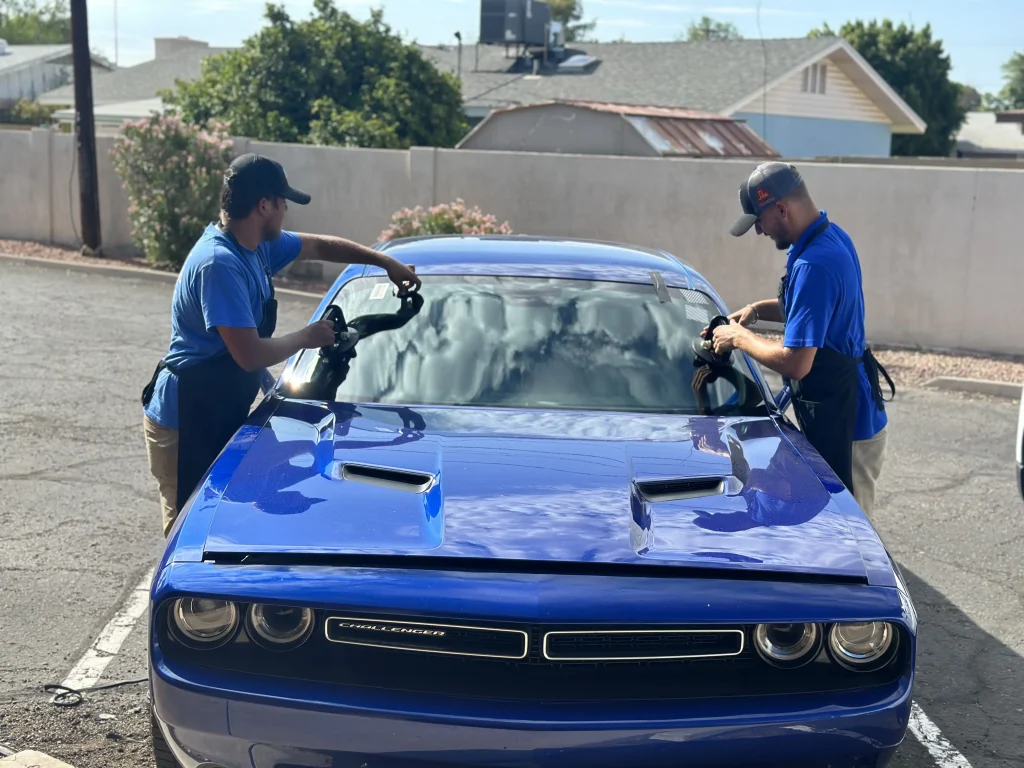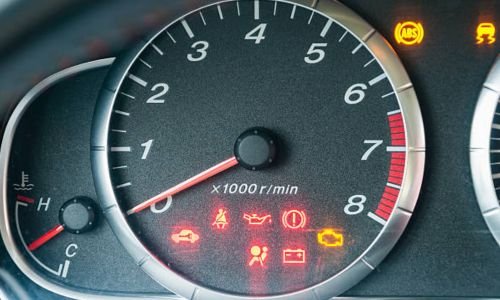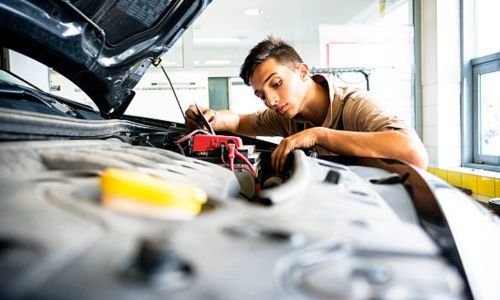A windshield is essential to any vehicle, giving the driver a clear view of the road ahead. Unfortunately, windshields are also prone to damage and wear over time, compromising their functionality and safety. That’s why it’s essential to maintain your windshield correctly. In this article, we’ll share some tips for maintaining a new windshield and keeping it looking new for longer.
Understanding Windshield Damage: How to Identify Chips and Cracks
Before diving into maintenance tips, it’s essential to understand the damage your windshield may face. Chips and cracks are the most common types of windshield damage. This section will discuss identifying these types of damage and when to seek professional repair.
Types of Windshield Damage
Several types of windshield damage can occur, including:
- Chips: These are minor marks on the windshield, usually caused by small rocks or debris hitting the glass. They are generally less than 5mm in diameter and can often be repaired.
- Cracks: Cracks are larger than chips and can be caused by various things such as temperature changes, impact from more prominent objects, or stress on the glass. They can often be repaired if they are not too large.
- Bullseye: This type of damage is caused by a circular object hitting the windshield and leaving a circular mark with a cone in the center. These can usually be repaired if they are not too large.
- Star break: This type of damage is similar to a bullseye, but instead of a cone in the center, it has several small cracks radiating out from the impact point.
- Combination break: This type of damage combines different kinds, such as a chip and a crack or a bullseye and a crack.
When to Seek Repair
It is essential to seek windshield repair as soon as you notice any damage to your windshield. Even small chips or cracks can spread over time and weaken the integrity of the glass. Here are some specific instances when you should seek repair:
- Chips or cracks: If you notice any chips or cracks in your windshield, no matter how small, you should seek repair immediately. Even tiny chips can grow and eventually lead to a larger trial.
- Weather changes: Extreme temperatures can cause your windshield to expand and contract, potentially worsening existing damage. If you notice any changes in your windshield’s condition after a temperature change, seek repair.
- Safety concerns: If the damage is in your sight while driving, getting it repaired as soon as possible is essential for safety reasons.
Key Points:
- According to a survey conducted by AAA, 9 out of 10 American drivers stated that they had experienced damage to their windshields at some point in their driving history.
- The same survey found that more than half of drivers who had experienced windshield damage delayed getting it repaired, with nearly one-third stating they had put off repairs for over a month.
- According to a report by the National Highway Traffic Safety Administration (NHTSA), damaged windshields contribute to approximately 8% of all vehicle crashes.
- The NHTSA also reports that having a cracked or damaged windshield can impair a driver’s vision and reduce their ability to react to hazards on the road, particularly in adverse weather conditions.
Maintaining a New Windshield: Tips and Tricks
Now that you know how to identify windshield damage, let’s discuss some tips and tricks for maintaining a new windshield and preventing injury.
Avoiding Damage
- Follow other vehicles at a safe distance to avoid rocks and debris kicked up by their tires.
- Avoid driving on gravel roads or in areas with loose rocks and debris.
- Be cautious when parking near construction sites or areas with heavy foot traffic.
Cleaning Your Windshield
- Use a soft microfiber cloth to clean your windshield. Avoid using abrasive materials that can scratch the glass.
- Use a gentle, non-abrasive cleaner to avoid damaging the glass or any surrounding plastic or rubber components.
- Clean the inside of your windshield regularly to prevent build-up from obstructing your view of the road.
Protecting Your Windshield
- Consider applying a windshield protection film or coating to help prevent damage from rocks and debris.
- Keep your windshield wipers in good condition and replace them as needed to prevent scratches and damage to the glass.
- Store your vehicle in a covered area or garage to protect your windshield from extreme weather conditions.
DIY vs. Professional Repair: Which Option is Right for You?
If you encounter windshield damage, you may wonder whether to attempt DIY repairs or seek professional assistance. In this section, we’ll discuss the pros and cons of each option to help you make an informed decision.
DIY Repairs
- Pros: DIY repairs can be cost-effective and convenient, particularly for small chips or cracks that can be repaired with resin injection.
- Cons: DIY repairs require some skill and knowledge, and if not done correctly, they can worsen the damage or compromise your windshield’s safety.
Professional Repairs
- Pros: Professional repairs are typically more effective and reliable, particularly for more extensive or significant damage to your windshield.
- Cons: Professional repairs can be more expensive and time-consuming, and you may need to leave your vehicle with the repair shop for several hours or even overnight.
Conclusion
Tips. For MA, the windshield is essential to any vehicle; proper maintenance is critical to keeping it looking and functioning. With good care, your windshield will continue to provide a clear view of the road ahead and help keep you safe. By following the tips and tricks we’ve discussed in this article, you can help prevent damage, identify and address any damage that occurs, and decide whether DIY or professional repairs are suitable options.
FAQs
How often should I clean my windshield?
It’s a good idea to clean your windshield regularly, ideally once a week or more frequently if you drive in dusty or dirty areas.
Can I repair a crack in my windshield myself?
While DIY repairs are possible for some types of windshield damage, seeking professional assistance for more extensive or significant damage is generally recommended, mainly if it’s in your sight.
How long does it take to repair a windshield?
The time required for windshield repair or replacement will vary depending on the extent of the damage and the repair or replacement method used. However, most repairs can be completed in less than an hour, while replacements may take several hours or even a whole day.
What should I do if I notice damage to my windshield?
If you notice damage to your windshield, addressing it immediately is essential to prevent it from worsening. Depending on the extent of the damage, you may be able to have it repaired or need to have the windshield replaced.
How can I protect my windshield from damage?
In addition to following the tips we’ve discussed in this article, you can also consider applying a protective film or coating to your windshield to help prevent damage from rocks, debris, and other hazards on the road.




























